- Home
- Neal Stephenson
Anathem Page 44
Anathem Read online
Page 44
“No. The dig,” I said. “Someone has been digging up the Temple of Orithena! It was buried by an eruption in Negative 2621.”
“Who’d do that and why?” Cord asked.
Sammann zoomed back in. Now that I knew what to look for, I could see that the whole dig was surrounded by a wall. It was pierced in one place by a gate. Inside, several structures had been erected around a rectangular courtyard—a cloister. A tower sprouted from one of these.
“It’s a math,” I said. “Come to think of it, I once heard a story—probably from Arsibalt—that some order had gone to Ecba and started trying to dig their way down to the Temple of Orithena. I thought it was just a few eccentric fraas with shovels and wheelbarrows, though.”
“I don’t see any heavy equipment on the site,” Crade pointed out. “A few people with shovels could dig a hole that deep if they kept at it long enough.”
This left me a little irritated, since it ought to have been obvious to me; after all, our Mynster had been constructed in the same style. But Crade was right and there was nothing I could do but agree as vigorously as I could so that he wouldn’t explain this any further.
“This is all very interesting,” Sammann said, “but it’s probably a dead end for us.”
“I agree,” I said. Ecba was on another continent; or, to be precise, it was in the Sea of Seas which lay among four continents on the opposite side of the world.
“Orolo is not in the mountains,” Ganelial Crade announced, pocketing his jeejah. “He passed through here and kept right on going.”
(on the speely: two very beautiful people getting married)
“How do you know this?” Sammann asked. I was glad of it. Crade was so sure of himself that I found it draining to confront him with even simple questions. Sammann seemed to derive wicked pleasure from doing so.
Crade rose to it. “He got a ride as far as here from some Samble folk who were going this way, and stayed the night before last in the back of my cousin’s fetch, just a couple of miles from here.”
“The back of his fetch? Doesn’t your cousin have a spare bed?” Sammann asked.
“Yulassetar travels a lot,” Crade answered, “the back of his fetch is nicer than his house.”
“You say this happened the night before last?” I asked. “I had no idea we were so hot on his trail!”
“Getting colder every minute…Yulassetar helped him get outfitted yesterday morning, and then Orolo hitched a ride on a northbound drummon.”
“Outfitted how?” Cord asked.
“With warm clothes,” Crade said. “The warmest clothes. This is something Yul knows a lot about. It’s what he does for a living. I’m sure that’s why Orolo sought him out in Norslof.”
“Why would Orolo want to keep going north?” I asked. “There’s nothing there, am I right?”
Sammann pawed at my cartabla—which had a larger display than his jeejah—zoomed way out, and slewed it north and east. “Practically nothing but taiga, tundra, and ice between here and the North Pole. As far as economic activity is concerned, there are fuel tree plantations for the first couple of hundred miles. Beyond that, nothing but a few resource extraction camps.”
The view on the cartabla seemed to contradict him, as it was densely netted with roads that came together at named places, many of which were ringed by concentric beltways. But all of these were depicted in the faint brown color used to denote ruins.
(on the speely: a fiery rocket launch from an equatorial swamp)
“Orolo’s going to Ecba!” Cord proclaimed.
“What are you talking about?” Crade demanded.
“Ecba is not on this continent, you have to fly!” I said.
“He’s going over the pole,” she explained. “He’s headed for the sledge port at Eighty-three North.”
We were in the habit of referring to the Saecular Power as if it were one thing down through the ages. This seemed simple-minded or even insulting to some extras—though they did essentially the same thing when they spoke of the Powers That Be. Of course we knew it was an over-simplification. But for us it was a useful convenience. Whatever empire, republic, despotate, papacy, anarchy, or depopulated wasteland lay beyond our walls at a given moment, we could slap this name on it and predicate certain things of it.
What you are reading does not attempt to set forth details as to how the Saecular Power was constituted in my day. Such information can be had anywhere. It might even be interesting if you know nothing about the history of the world up to the Terrible Events; but if you have studied that, everything since will seem like repetition and all the particulars as to how the Saecular Power of my day was organized will remind you of more or less ancient forerunners, but with less majesty and clarity since the ancients were all doing it for the first time and believed they were on to something.
But at this point I had to attend to one of those details. The Saecular Power in my day was a federation. It broke down into political units that more or less agreed with Arbre’s continents. One could travel freely within most of those units, but to cross from one to another one had to have documents. The documents were not that difficult to obtain—unless one was avout.
Since the Reconstitution, we had existed wholly apart from the legal system of the Saecular Power. They had no records of us, no jurisdiction over us, no responsibility for us; they could not draft us into their armies, levy taxes on us, or even step through our gates except at Apert. Likewise they would not offer us assistance of any kind, except for protecting us from direct assault by mobs or armies if they felt like it. We didn’t get pensions or medical care from the Saecular Power—and we certainly didn’t get identity documents.
It has become obvious during the writing of this that it might one day be read by people from other worlds. So I’ll say that we considered ourselves to have ten continents but that the Cousins, or anyone else who came to us from beyond and looked at Arbre fresh, would have said we had only seven—and they would have been right. We counted ours as ten because the original tally had been made by explorers working outward from the Sea of Seas, who could only guess at what might lie more than a few days’ march from its convoluted shores. It happened more than once that they bestowed distinct names on lands that were sundered by straits and gulfs, but that on further—and much later—exploration proved to be lobes of the same great land mass reaching toward the Sea of Seas from different quarters. But by that time the places had made their way into the classical myths and histories under the ancient names, which we could no more dislodge from the culture than we could withdraw one of the colossal foundation-stones that supported the Mynster.
Likewise, during the Rebirth, land had been found on the other side of the world from the Sea of Seas and had been proclaimed and mapped as a new continent. But centuries later it had been determined that the far northern reaches of that continent wrapped over the North Pole and thence extended south all the way to the Sea of Seas. It was not a new continent at all but a limb of the oldest and best-known continent, and no one had ever had a clue about it because even the aboriginal peoples who knew how to live in ice houses could not venture much above eighty degrees of latitude. To prove that the “old” and “new” continents were one, it was necessary to go all the way up to ninety degrees north latitude—the North Pole—and then descend to eighty or less on the other side. This had not been accomplished until the last century before the Terrible Events and it had not changed people’s habit of referring to the place that Cord, Sammann, Ganelial Crade, and I were on now, and the land mass forming the northern boundary of the Sea of Seas, as two different continents. The ice cap separated the two even more absolutely than an ocean would have, and no normal person ever traveled between them that way. They flew in an aerocraft or did it in a ship.
But to do it by aerocraft or ship you’d have to pass through ports of entry and show documents. Orolo had none and no hope of getting any. So he was doing what was logical, which was to exploit the fact that
the two continents were in fact one. Cord had been the first to put this whole picture together in her mind.
No. She’d been the second. The first had been Fraa Jad.
“The sledge trains! That’s like something out of a children’s storybook to me,” Sammann said. “Do they still operate?”
“They were shut down for a while, but they are running again now,” Crade confirmed. “The price of metals went up. People went back to stripping the Deep Ruins.”
“We used to make parts for the sledge locomotives in the machine hall where I worked,” Cord said. “We were the largest machine hall that was so far north, so they’d send the jobs to us. It’s been a source of business for that shop for over a thousand years. We had to make them of special alloys that wouldn’t shatter in the cold.” And she went on in this vein for a minute or two; she could talk about alloys the way some girls talked about shoes. Crade and Sammann, who’d been so fascinated to hear about the sledge train idea at first, got less and less so the more Cord said of it.
In my mind I was replaying the memory of Fraa Jad in Orolo’s cell yesterday. He couldn’t have spent more than half a minute gazing at these phototypes before he’d figured it all out. Even if you were the kind of person who attributed nearly supernatural powers to the Thousanders, this seemed a little weird. He must have had some prior knowledge about this.
“This excavation,” I said, tapping my finger on the phototype.
Everyone looked at me funny. I realized that I had just interrupted Cord’s disquisition about alloys.
(on the speely: victims of a roadside massacre; their hysterical wives rending their clothes and rolling on the ground)
I continued, “I’ll bet you my last energy bar that if you look it up, you’ll find that it is 690 years old.”
“You think they started digging this hole in 3000,” said Ganelial Crade. “Why? You like round numbers?”
This was an extremely rare attempt by Crade to make a joke, and so etiquette required me to smirk at it for a moment before I answered. “I’m pretty sure Fraa Jad knew that this was going on. He recognized this as soon as he saw it. So, I’m thinking that this dig must have been launched during the most recent Millennial Convox. The Thousander math at Saunt Edhar would have sent delegates to that Convox and so they would have heard about it, and brought the knowledge back home with them—which is how Fraa Jad knew.”
Sammann, as usual, was ready to play devil’s advocate: “I’m not disagreeing, but even if you’re right, it seems strange to me that Fraa Jad could take one look at this phototype and know that it was the Orithena dig. It could be any hole in the ground. There’s nothing to peg it to Ecba.”
Until now we had been attending mostly to the phototype that showed the entire dig on one sheet. The others were zoomed-in detail shots that hadn’t made much sense before. Scanning them now, I was able to perceive the outlines of ancient building foundations, the stubs of columns, and flat areas of tiled floor. One of these was marked thus:
I pointed to it. “That’s the analemma,” I said. “The Temple of Orithena was a big camera obscura. It had a small hole in the roof that projected an image of the sun on the floor. As the seasons changed, the sun-spot hit the floor in a different place each day during their midday ritual—what we celebrate now as Provener. Over the course of the year it would trace this pattern on the floor.”
“So, you think Fraa Jad noticed the analemma on this phototype and said to himself ‘Aha, this must be the Temple of Orithena?’ That seems like pretty quick thinking to me,” Cord said.
“Well, he’s a pretty smart guy,” I returned. This was not the most polite answer. Jesry would have planed me at this point. Cord was right to be skeptical about it. I wasn’t willing to dig any deeper on this point, though. The speed with which Fraa Jad had recognized this hole in the ground suggested that he, and presumably the other Millenarians, knew a lot about it. I was worried that if we pulled any harder on this loose thread, it would lead us back to crazy talk about the Lineage.
“Oh, how interesting,” Sammann said, gazing into his jeejah, “Erasmas wins his bet. This dig in the phototypes was started in A.R. 3000.” He read another tidbit off the screen, then looked up and grinned at me. “It was started by Edharians!”
“Great!” I muttered, wishing I could take Sammann’s jeejah and drop it down a toilet.
“It’s a spinoff of Saunt Edhar. But a lot of other Edharian maths around the world contributed fraas and suurs to get it started.”
“How many avout live there?” Cord asked. I could see her doing the calculation in her head: if each avout moves twenty wheelbarrow loads of dirt per day, for 690 years, how big does the hole get?
“I’ll have to get back to you on that,” Sammann said, grimacing. “Most of the information on this topic is crap.”
“What do you mean by that?” Crade demanded. We all looked at him, because in an instant he had become markedly defensive.
Sammann raised his eyes from the screen of the jeejah and gazed interestedly at Crade. He let a few moments go by, then responded in a calm and matter-of-fact tone: “Anyone can post information on any topic. The vast majority of what’s on the Reticulum is, therefore, crap. It has to be filtered. The filtering systems are ancient. My people have been improving them, and their interfaces, since the time of the Reconstitution. They are to us what the Mynster is to Fraa Erasmas and his kind. When I look at a given topic I don’t just see information about that topic. I see meta-information that tells me what the filtering systems learned when they were conducting the search. If I look up analemma, the filtering system tells me that only a few sources have provided information about this and that they are mostly of high repute—they are avout. If I look up the name of a popular music star who just broke up with her boyfriend,” Sammann continued, nodding at a tearful female on the speely, “the filtering system tells me that a vast amount of data has been posted on this topic quite recently, mostly of very low repute. When I look up the excavation of the Temple of Orithena on the Island of Ecba, the filtering system informs me that people of very high and very low repute have been posting on this topic, slowly but steadily, for seven centuries.”
Sammann’s explanation had failed if its purpose had been to settle Crade down. “What’s an example of a person of high repute? Some fraa sitting in a concent?”
“Yes,” Sammann said.
“And what would a low-repute source be?”
“A conspiracy theorist. Or anyone who makes a lot of long rambling posts that are only read by like-minded sorts.”
“A Deolater?”
“That depends,” Sammann said, “on what the Deolater is writing about.”
“What if he’s writing about Ecba? Orithena? The Teglon?” Crade asked, whacking his index finger into a phototype that depicted the ten-sided plaza in front of the ancient temple.
“The filters tell me that a lot has been posted in that vein,” Sammann said, “as you appear to know very well. Sorting it out is difficult. When I see such a pattern emerging in the filter interface, my gut tells me that most of it is probably crap. It’s a quick and superficial judgment. I could be wrong. I apologize if my choice of words offended you.”
“You’re forgiven,” Crade snapped.
“Well!” I exclaimed, after a few moments’ awkward silence had gone by. “This has been fascinating. It’s good that we figured this out before we wasted a lot of time searching the mountains! Obviously, the whole premise of my search for Orolo has changed. None of you imagined he would be going to the other side of the world. So you’ll all want to turn around and head back south at this point.”
Everyone just looked at me. None of their faces was readable.
“Or so I imagine,” I added.
“This changes nothing,” Sammann said.
“I’m not about to ditch my sib in this dump,” Cord said.
“You have to have two vehicles in case one breaks down in the cold,” said Ganelial Crade.
I couldn’t argue with his logic. But I didn’t for one moment think that this was his real reason for wanting to tag along. Not after he had let the word Teglon slip out.
“From here to Eighty-three North is two thousand miles on a great circle route,” said Sammann, working his jeejah. “On the highway, it’s twenty-five hundred and some.”
“If you and Sammann learn to drive, Raz, so that we can switch off, we can make it in three or four days,” Crade said.
“The road’s bound to get worse as we go north,” Cord said. “I would plan on it taking a week.”
Crade was eager to dispute that with her but she added, “And we’ll have to modify the vehicles.”
So we encamped in the fueling station’s back lot and set to work. Once the proprietors understood that we were just passing through en route to the far north, they became more comfortable with us and things got easier. They assumed we were just another crew of vagabonds going up to mine the ruins, and better equipped and financed than most.
The next day we used Cord’s fetch to go out and buy new tires for Crade’s. Then we used his to get tires for hers. The new tires were deeply grooved and had hobnails sticking out of them. Cord and Gnel (as Ganelial Crade now insisted we call him) worked together on some sort of tool-intensive project to replace the vehicles’ coolants and lubricants with ones that would not freeze. Neither Sammann nor I knew much about working on vehicles, so we stood around and tried to be useful. Sammann used his jeejah to study the route north, reading logs posted by travelers who’d gone that way recently.
“Hey,” I said to him at one point, “my mind keeps going back to an image I saw on that speely feed yesterday.”
“The burning librarian?”
“No.”
“The mudslide hitting the school?”
“No.”
“The brain-damaged boy playing with the puppies?”
“No.”
“Okay, I give up.”
“A rocket taking off.”
He looked at me. “And—what? Blowing up? Crashing into an orphanage?”

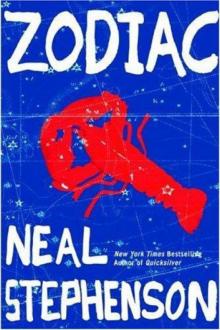 Zodiac: The Eco-Thriller
Zodiac: The Eco-Thriller The Mongoliad: Book One
The Mongoliad: Book One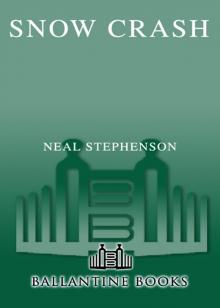 Snow Crash
Snow Crash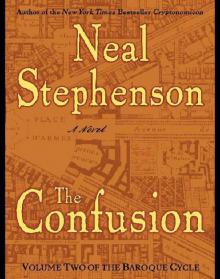 The Confusion: Volume Two of the Baroque Cycle
The Confusion: Volume Two of the Baroque Cycle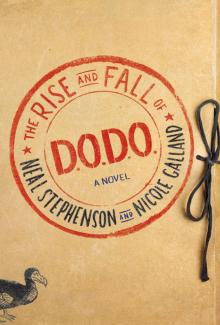 The Rise and Fall of D.O.D.O.
The Rise and Fall of D.O.D.O. The Diamond Age: Or, a Young Lady's Illustrated Primer
The Diamond Age: Or, a Young Lady's Illustrated Primer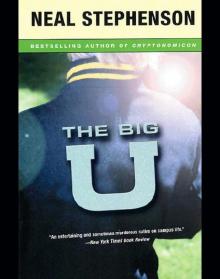 The Big U
The Big U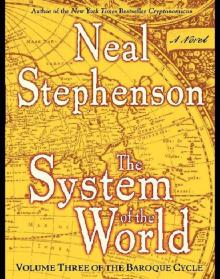 The System of the World: Volume Three of the Baroque Cycle
The System of the World: Volume Three of the Baroque Cycle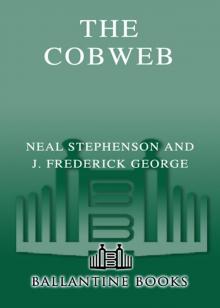 The Cobweb
The Cobweb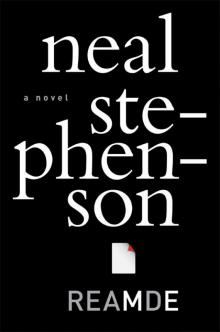 Reamde
Reamde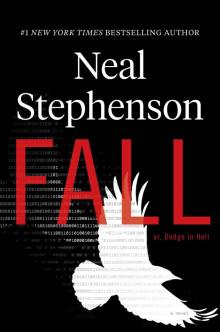 Fall; or, Dodge in Hell
Fall; or, Dodge in Hell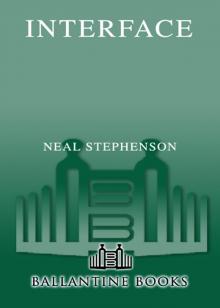 Interface
Interface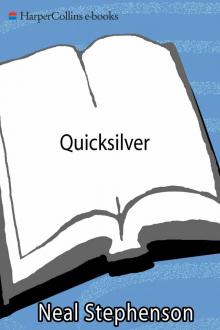 Quicksilver
Quicksilver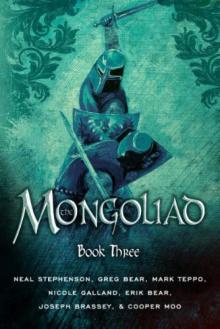 The Mongoliad: Book Three
The Mongoliad: Book Three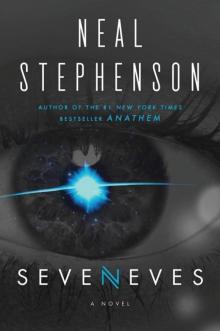 Seveneves
Seveneves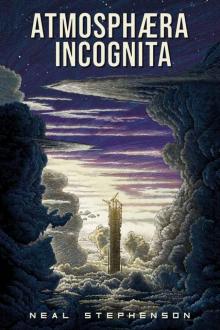 Atmosphæra Incognita
Atmosphæra Incognita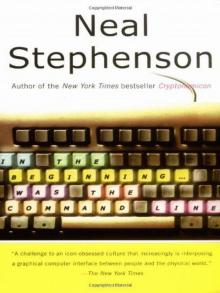 In the Beginning...Was the Command Line
In the Beginning...Was the Command Line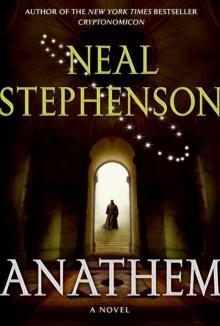 Anathem
Anathem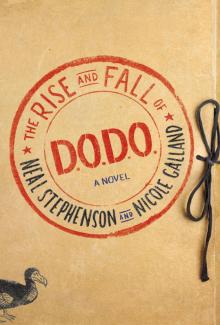 The Rise and Fall of D.O.D.O.: A Novel
The Rise and Fall of D.O.D.O.: A Novel The Mongoliad: Book Two
The Mongoliad: Book Two Diamond Age or a Young Lady's Illustrated Primer
Diamond Age or a Young Lady's Illustrated Primer THE System OF THE WORLD
THE System OF THE WORLD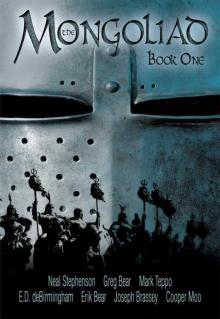 The Mongoliad: Book One tfs-1
The Mongoliad: Book One tfs-1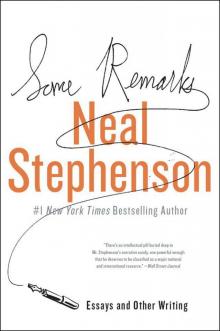 Some Remarks: Essays and Other Writing
Some Remarks: Essays and Other Writing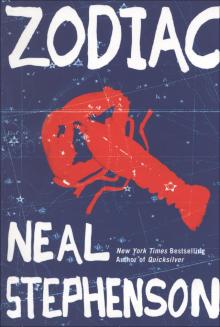 Zodiac
Zodiac Spew
Spew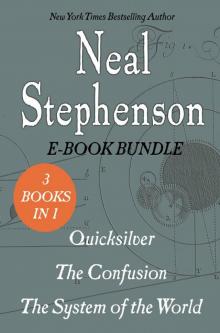 The Baroque Cycle: Quicksilver, the Confusion, and the System of the World
The Baroque Cycle: Quicksilver, the Confusion, and the System of the World The Diamond Age
The Diamond Age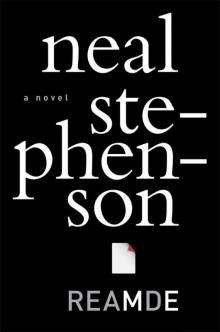 Reamde: A Novel
Reamde: A Novel In the Kingdom of Mao Bell
In the Kingdom of Mao Bell Mother Earth Mother Board
Mother Earth Mother Board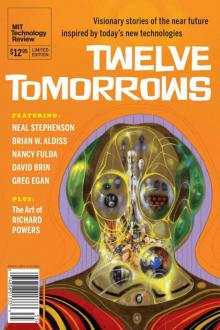 Twelve Tomorrows - Visionary stories of the near future inspired by today's technologies
Twelve Tomorrows - Visionary stories of the near future inspired by today's technologies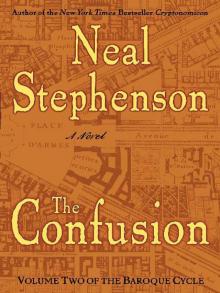 The Confusion
The Confusion The Great Simoleon Caper
The Great Simoleon Caper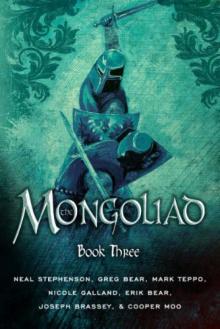 The Mongoliad: Book Three tfs-3
The Mongoliad: Book Three tfs-3